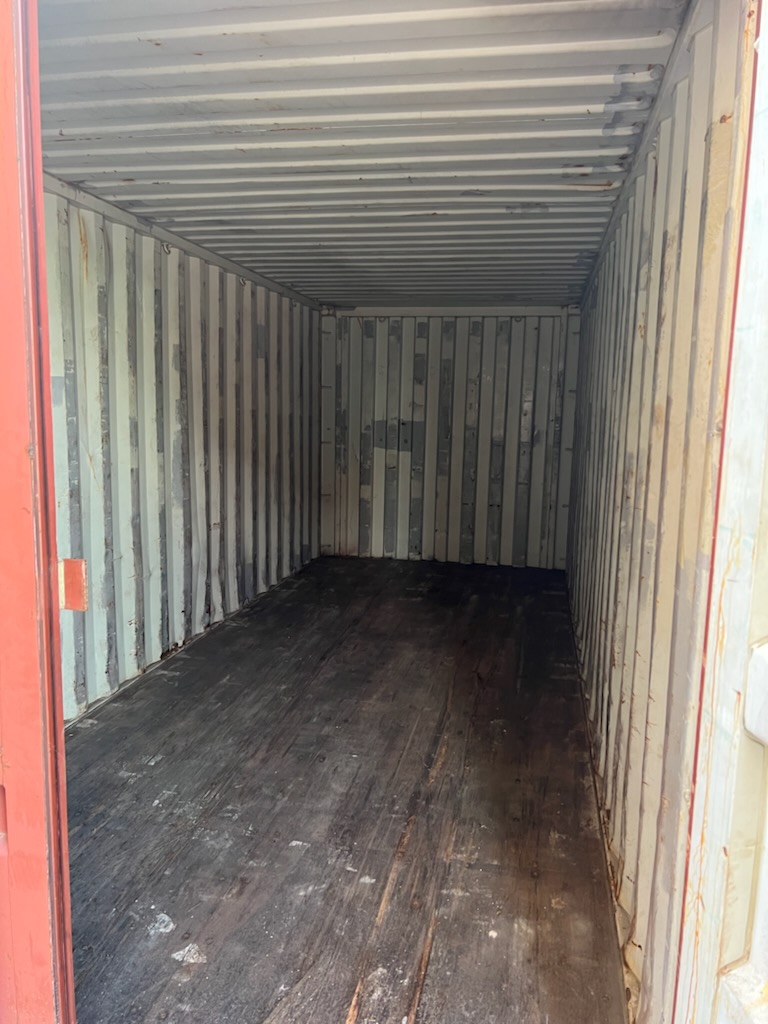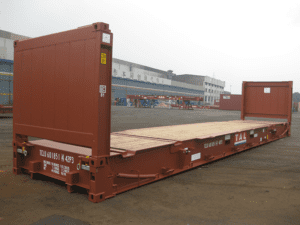In recent years, cargo containers have emerged as a popular alternative to traditional storage solutions. Their versatility, durability, and affordability make them an attractive option for individuals and businesses alike. In this article, we’ll delve into the pros and cons of using cargo containers for storage, addressing common questions and concerns, such as their risks, limitations, and the container grading system. Additionally, we’ll highlight the commitment of companies like K3 Containers and Transport to offering high-quality used containers, ensuring a reliable and secure storage solution for their customers.
Pros of Using Cargo Containers for Storage:
Durability and Weather Resistance: One of the primary advantages of container storage is the impressive durability of shipping containers. Constructed from high-quality, corrosion-resistant steel, these containers are designed to withstand extreme weather conditions, including heavy rain, strong winds, and even snow. As a result, your belongings will be well-protected from the elements when stored in a cargo container.
Security: Shipping containers are built to be secure, with features such as heavy-duty steel construction, reinforced corners, and sturdy locking mechanisms. These containers are designed to deter theft and vandalism, making them an excellent option for safeguarding valuable items such as expensive tools, equipment, or even vehicles. For added security, you can also install additional locks, alarms, or surveillance systems.
Customizability: Cargo containers are highly customizable, allowing you to create a storage solution that fits your unique needs. You can add insulation, ventilation, or air conditioning to maintain optimal conditions for your stored items. You can also install shelving, racks, or custom-built storage systems to organize your belongings efficiently. Additionally, cargo containers can be painted or decorated to match your desired aesthetic or blend in with your property.
Cost-Effectiveness: When compared to traditional storage facilities or constructing a new storage building, container storage can be a more affordable option. This is particularly true if you purchase a used container, which can cost significantly less than a new one. Moreover, the ongoing costs of maintaining a cargo container are relatively low, making it an economically viable long-term solution for storage needs.
Eco-Friendly: Repurposing a used cargo container as a storage solution is an environmentally friendly choice. Shipping containers are often left unused once they have reached the end of their shipping life, contributing to waste and the consumption of valuable resources. By giving new life to an existing container, you are reducing your environmental impact and promoting sustainable practices.
Portability and Flexibility: Another advantage of cargo container storage is its portability. If you need to move or relocate your stored items, you can easily transport the container to a new location. This is especially useful for businesses or individuals who frequently change locations or require temporary storage solutions. Additionally, as your storage needs grow, you can add more containers or modify your existing container to accommodate your changing requirements.
Cons of Using Cargo Containers for Storage
Condensation and Moisture Issues: One of the main disadvantages of using containers for storage is the risk of condensation buildup. Shipping containers are made of steel, which can result in temperature fluctuations and cause moisture to accumulate inside. This can lead to dampness, mold, or even damage to stored items. To prevent these issues, it’s essential to insulate and ventilate the container properly, which can add to the overall cost and effort.
Limited Sizes and Dimensions: Cargo containers typically come in standard sizes (20-foot and 40-foot) and limited dimensions. While these sizes can accommodate a wide range of storage needs, they might not be suitable for all situations. If you require a specific size or shape for your storage solution, you may need to look for alternatives or consider combining multiple containers to create the desired space.
Local Regulations and Permits: Depending on your location, you may need to obtain permits or comply with local regulations when using a shipping container for storage. Some areas have zoning laws, building codes, or homeowners’ association rules that can restrict the use, placement, or appearance of cargo containers on your property. It’s essential to research your local requirements and ensure that your container storage solution is compliant.
Delivery and Placement: Transporting and positioning a cargo container can be challenging, particularly if you have limited space or difficult-to-access areas. Containers are heavy and require specialized equipment for transportation and placement, such as a crane or forklift. This can increase the overall cost and complexity of the process, making it a potential disadvantage for some users.
Understanding Container Grades and Costs
When purchasing a used cargo container, it’s essential to consider its condition. Containers are graded on a scale of 1 to 5, with 1 being new and 5 being severely used. Additionally, the cost of repairing the containers to make them Cargo Worthy (CW) is also taken into account. Here’s a revised overview of the grading system, including the costs for CW repairs:
- One-Trip (Grade A) – Almost new, used only for a single shipping trip; minimal wear and tear.
- Grade 2 CW – Used but still in good condition; suitable for shipping and storage; may have minor cosmetic damage; already considered Cargo Worthy.
- Grade 3 As-Is – Used, with signs of wear, but can be restored to Cargo Worthy condition with repairs costing up to $700; structurally sound and weatherproof; suitable for storage but not for shipping without the necessary repairs.
- Grade 4 As-Is – Used, with visible damage, rust, or compromised structural integrity; requires repairs costing between $701 and $1,200 to be considered Cargo Worthy; might require further repairs before use.
- Grade 5 Scrap – Severely used, with significant damage or corrosion; not suitable for storage or shipping; typically sold for scrap metal or other purposes; requires repairs costing over $1,200 to be considered Cargo Worthy.
It’s important to note that these repair prices are subject to change. When selecting a container, it’s crucial to balance cost with quality. Lower-graded containers may be more affordable, but they can also present potential issues with safety, durability, and appearance.
An interesting option to consider is “young” Grade 5 containers, which have damage that is almost always limited to the floor. This type of container can be a great choice for specific applications, such as food trucks, where the damaged floor may not be a significant concern.
In conclusion, cargo containers can provide a durable, secure, and customizable storage solution for individuals and businesses. They offer advantages such as weather resistance, security, customizability, cost-effectiveness, eco-friendliness, and portability. However, they also have potential disadvantages, including moisture issues, limited sizes, local regulations, and transportation challenges. Understanding the container grading system is crucial when purchasing a used container to ensure its quality and safety. By carefully weighing the pros and cons and choosing a reputable provider, such as K3 Containers and Transport, you can make an informed decision on whether cargo container storage is the right solution for your needs.
At K3 Containers and Transport, we offer high-quality used containers that are Cargo Worthy or better condition, ensuring a reliable and secure storage solution for our customers. Our team is committed to helping you find the ideal container for your specific needs, whether it’s for personal or business use. Reach out to us today to learn more about our container options and how we can help you streamline your storage solutions.




